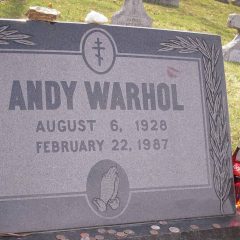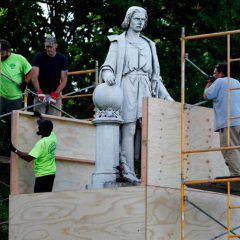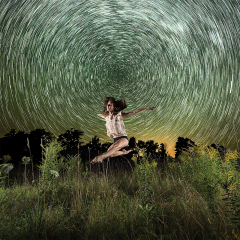There have always been artists who are challenged by working at the edge of visibility. For painters that originally meant night scenes, which are famously difficult, but wonderful when they work. Ad Reinhardt’s black paintings are a twentieth-century example; a more recent one is Martin Creed’s Work No. 227, The Lights Going On And Off (2000), which I loved because it emphasized the essential, but often ignored, necessity of light for all vision. My thoughts on the phenomenon are prompted by work in two different locations that take place in the dark — take place, because both are performative: Tino Sehgal’s This Variation shown at the Heugenot House, Kassel as part of documenta XIII, (on view through Sept. 16, 2012) the other, which I’ll discuss in part 2, is by Janice Kerbel at Project Arts Centre, Dublin.
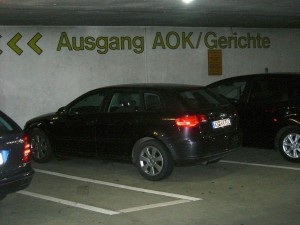
Finding works sited outside documenta’s main exhibition buildings is always a bit of a scavenger hunt; it can involve searching in an underground parking garage or among abandoned warehouses. The map provided by the organizers is usually imprecise and occasionally entirely wrong; I never did locate a piece by Emily Jacir, alas. Still, I entered the Heugenot House, a dilapidated, early nineteenth-century building, where the map indicated work by Theaster Gates and Tino Seghal. The Gates installation was easy to find, occupying much of the building’s interior, but I could see no trace of the Seghal, not even a label (in an exhibition with copious text on display). The artist has always been unwilling to talk about his work, and surely enough, the documenta XIII guidebook’s index lists page 438 for Seghal, but the book itself skips from page 437 to page 440. No help there. I was sitting in the building’s courtyard, thinking about what to do next, when I spied an un-marked, but conspicuously new door across the way.
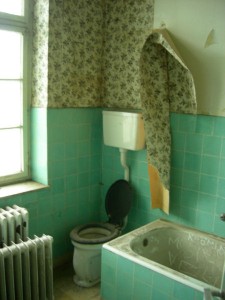
Like Alice, I was lead by curiosity to open it, and found myself in a short corridor which lead to an entirely dark room. A relief from long wall labels, and from the sun on a hot day. It was quiet, so I stood next to a wall, waiting for my eyes to dark adapt. Once they had, I could make out others standing in the room, but not well enough to see what they were doing. A woman started to speak about something in her past, as if talking to the group, but broke off so quickly that her words made no sense. Then it started: the humming and chanting: words, clicks and various vocalizations. It became a call and response among what I now could make out as more than a dozen people. Then the movements: sudden and awkward, by participants who had positioned themselves close to the visitors, sometimes in uncomfortable proximity. They jerked and writhed in place — then began to walk — or dance in what was clearly a highly-coordinated flow of bodies, weaving among the spectators, if one can use that term for visitors who could hardly see.

By this point the performers were singing in unison, with the occasional call of the leader, but chanting in a repetitive tone that recalled Philip Glass, and circling the room, making spasmic movements that might have been choreographed by Catherine Sullivan. Viewers entered at random times, and groups of students usually broke into squeals in response to the moving bodies in the dark; they were so disruptive that once the performers stopped abruptly. The strangest moment was when the lights went on and the 15-20 performers (who themselves looked like students) began singing the Beach Boys’ Good Vibrations as they exited slowly by a side door.
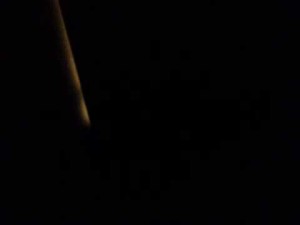
I had a sense of being present at an unfamiliar ritual performed by an ecstatic sect. I found it transfixing. The proximity of the performers was intimate, yet the dark kept it impersonal and eliminated the awkwardness of one-to-one interactions with strangers, which occurred with Sehgal’s Guggenheim Museum piece, This Progress (2010). I stayed quite a while, partially out of the rare pleasure of experiencing performance in the dark, which required listening, imagination, and a sort of bodily empathy rather than vision, which normally dominates our other senses. But I also stayed to try to understand the structure. What triggered the speaker to start and stop, the dancing and chanting to begin? Was it improvised or scripted; who lead the group, and how did the others follow in the dark? I could not figure it out. After leaving I found one of the performers in the courtyard and spoke with her briefly, but all that I learned was that This Variation is not entirely scripted, and the performers work in two-hour shifts.
I left with a head full of sounds and thoughts and some surprise at This Variation and my response to it. Sehgal’s art has two audiences: the performers themselves, and the more conventional audience of observers. And they clearly have entirely different experiences, yet the sense of having participated in the work, rather than remaining outside it, clearly extends to us as well. I loved it! And I’m still thinking about why.



